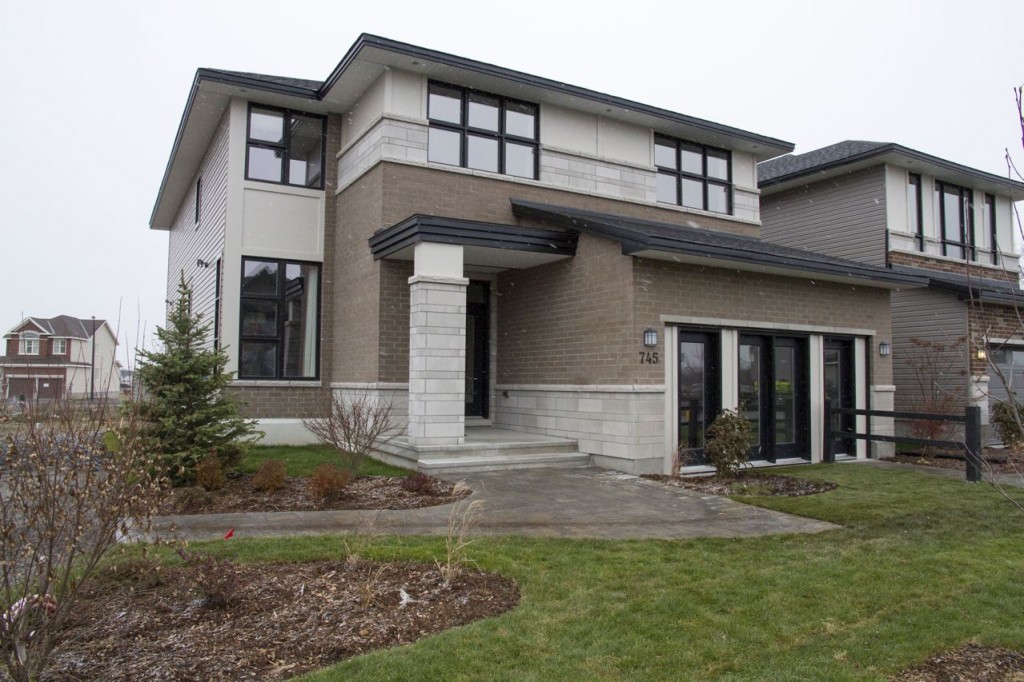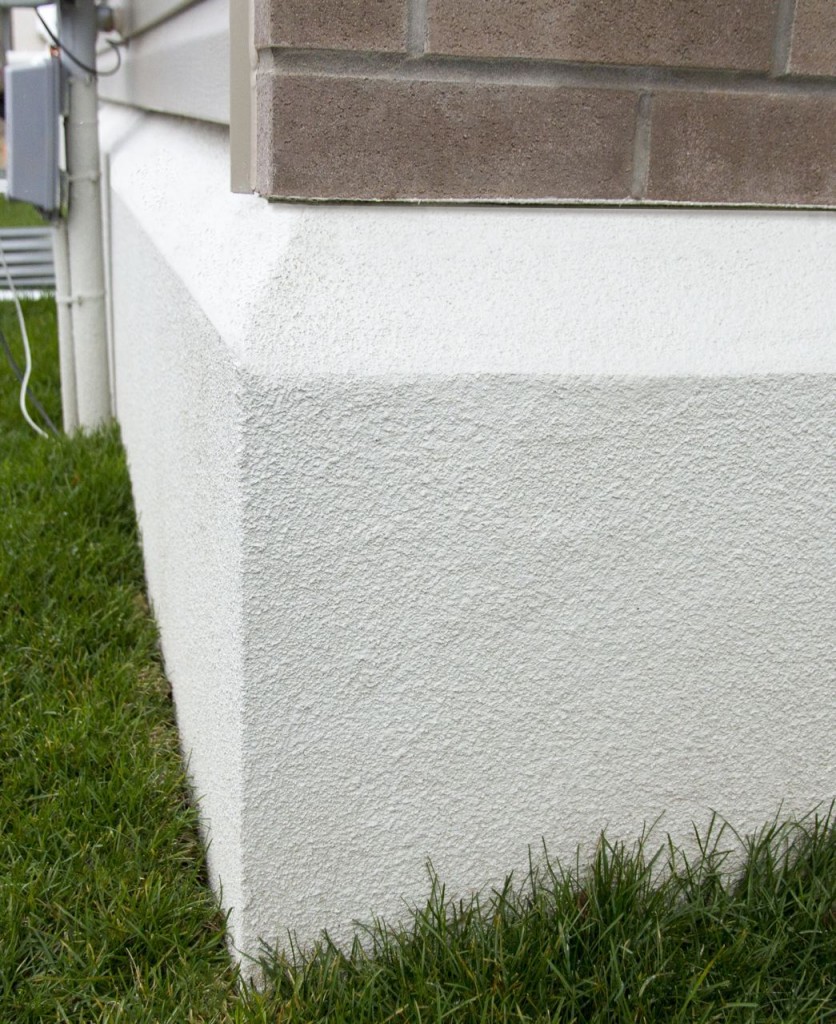
Drive through a new Urbandale community in Ottawa, and you may notice something different about the houses. With most houses built in Canada, the brick overhangs the foundation by a couple of inches. In new homes built by Urbandale, the foundation actually extends past the brick, hence their name for this new approach, Proud Foundations.
“What we’ve done is moved the insulation from the interior of the foundation to the exterior” says Matthew Sachs, General Manager of Urbandale Construction. “This keeps the concrete foundation from freezing, which has a number of benefits, including eliminating the chance of moisture problems due to condensation, and reducing the chance of foundation cracks.”
Exterior foundation insulation has been standard practice in commercial construction for years, but is rarely used in residential construction due to the higher cost and attention to detail needed to install it correctly. Urbandale has come up with an innovative way to install exterior insulation that’s cost effective and easy to replicate.
In order to ensure that condensation doesn’t occur on the inside face of the foundation, you need to have the correct ratio of internal and exterior insulation. Urbandale studied the design criteria for building in Ottawa’s climate and determined that if two thirds of the insulation is placed on the exterior, then the inner face of the foundation wall will never be cold enough to experience condensation. All houses in Canada experience some condensation in the wall assembly throughout the year. In most cases the condensation will evaporate without causing problems, but in some cases, and especially in new homes with large amounts of moisture in the concrete, the condensation can build up which can easily lead to mould. “A poured concrete foundation holds literally thousands of liters of water and can take up to a year to fully dry out”, explains Sachs. “During the first year it’s critical to ensure that condensation doesn’t build up inside the wall assembly, and with our Proud Foundations the conditions are never there for condensation to occur.”
Urbandale’s approach also makes basements more comfortable. A concrete foundation that is allowed to freeze in the winter will make the basement feel clammy and damp. If the concrete is never allowed to freeze, then it’s easier to maintain a comfortable indoor temperature in the basement. Urbandale also installs insulation underneath the slab, so that heat can’t escape through the floors and the floors are more comfortable to walk on.

Cracks can occur in concrete foundations when the foundation is subject to repeated freeze-thaw cycles. Concrete is porous which means that the foundation can soak up water like a sponge. When the concrete freezes the water turns to ice and expands, putting extra internal pressures on the concrete. This process of freezing and thawing can make a small crack expand as the pressure literally rips the concrete from the inside out. If the concrete is never allowed to freeze, then this process cannot occur, which reduces the chance of foundation cracks. Urbandale’s approach to exterior insulation also includes a waterproof elastomeric coating on the outside of the insulation, further reducing the chance of moisture getting into the house through foundation cracks.
Urbandale is clearly proud of their new approach, and with good reason. With land prices rising, houses are being built on a smaller footprint, and homeowners are trying to get more out of their home. A more comfortable basement, thanks to Urbandale’s Proud Foundations and under-slab insulation, increases the amount of usable space. Says Sachs, “We feel that the basement shouldn’t be just the space underneath your home, it should be more of your home.”
Urbandale’s Basement Wall Assembly
(Described from the inside-out)
-Drywall
-Batt insulation in stud cavity
-Poured concrete foundation
-Spray-on waterproof membrane/vapour barrier
-Rigid glass fibre insulation
-Elastomeric coating